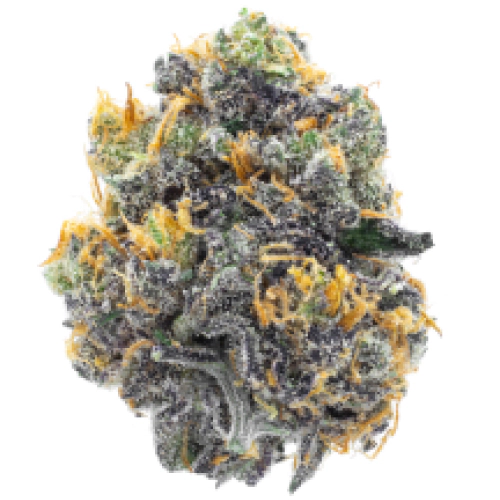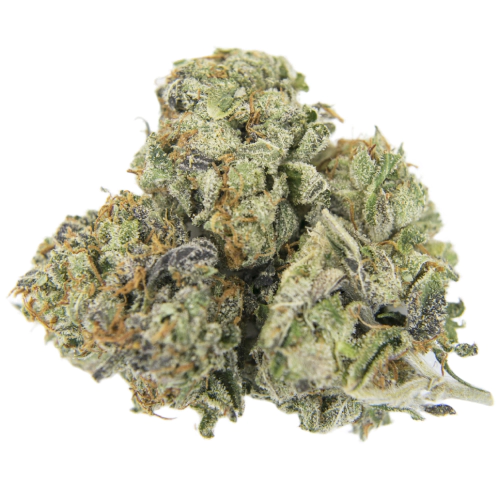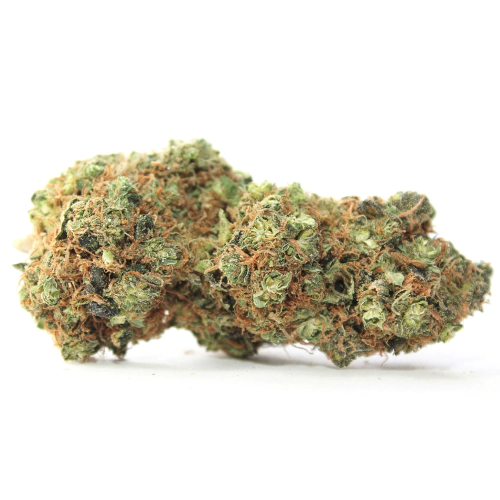THC 20.6 - 22.8%
CBD 0.27 - 0.63%
Effect Relaxed
Flavor Citrus
26 - 27%
0.61 - 0.77%
0.07 - 0.1%
Pine, Pungent
Euphoric
The Pine OG strain is a pure Sativa-dominant cannabis hybrid offering a host of heavy-hitting effects. Not to be confused with the Pine Tar Kush strain. It is a high THC rarity that holds 26-27%. Despite sky-high THC levels, this weed includes many beneficial cannabinoids:
The strain is rare and hard to find in dispensaries. When you are lucky to find this marijuana for smoking, be safe and don’t overdose because strains that top this THC level can be overwhelming even for seasoned weedheads.
Pine OG is rich in pinene, carene, and linalool, and these terpenes determine the strain’s aroma profile. As it goes from the name, the kush has a pine smell, which is very pungent. There are also woody undertones that are detected on the exhale.
The Pine OG weed delivers a powerful cerebral high that makes people happy, aroused, and energetic. Due to a euphoric mood boost, the strain can induce chattiness and inspire creativity in users.
Despite its Sativa-heavy genetics, the Pine OG strain is well regarded for its effects on:
This cannabis is popular with only a few patients, but it can trigger adverse effects in hypersensitive consumers. They are:
The Pine OG strain is not widely used in the United States; however, any grower can easily cultivate it at home. The plants are not tall and can be as high as 30’’-60’’. After a 52/62-day flowering phase, they form super dense nugs that emit a pungent aroma. In 61 days, the pot shrubs can be harvested. They produce 1-2 oz./ft2 when grown indoors and 10-15 oz./plant of outdoor harvest.
| THC | Tetrahydrocannabinol, or THC, is a major cannabis chemical compound. It is a psychoactive element that stimulates dopamine release and induces euphoria or happiness. THC-rich strains may be helpful with such conditions as lack of appetite, chronic pains , etc. It is considered to be the primary active marijuana component. | 26 - 27% |
| CBD | Cannabidiol, or CBD, is a major compound in cannabis, which is non-psychoactive. It is also proved to counteract the side effects of the second major component THC. CBD is widely used for medicinal purposes in rubs, oils and so on. It is helpful in muscle pain cases, may treat arthritis and migraines. Even Greeks used it against pain, while Queen Victoria applied it to get rid of menstrual cramps. | 0.61 - 0.77% |
| CBC | Cannabichromene, or CBC, is a minor cannabinoid, meaning that its quantity in cannabis is quite little. Though it has the same origin as CBD and THC, it is different in functions. Without any psychoactive effects, it is an efficient cannabis compound in combating acne and depression. CBC produces analgesic, antibacterial and anti-inflammatory effects. | 0.12 - 0.21% |
| CBG | Cannabigerol, or CBG, is one of the minor cannabis compounds in adult plants. On the other hand, young ones contain a lot of this antibacterial and anti-inflammatory component. During the growth, CBG is converted into different cannabinoids, mostly THC and CBD. The compound itself increases appetite and decreases eye pressure. | 0.07 - 0.1% |
| CBN | Cannabinol, or CBN, is a trace element in cannabis that is considered to be mildly psychoactive. It appears from oxidation THC, exposed to light and heat. CBN is mostly contained in old cannabis and in traditional hashish. It is effective against insomnia, bacterial infections and appetite loss. | 0.24 - 0.38% |
| THCV | Tetrahydrocannabivarin, or THC-V, is a compound contained in cannabis in trace amounts. Even though it is close to THC molecularly, it is different in effects. This compound may be psychoactive only in large amounts. THC-V reduces blood sugar, controls appetite, stimulates bone growth, etc. African Sativa strains are the richest in THC-V. | 0.06 - 0.24% |
| Carene | Carene (also known as Delta-3 carene) is a terpene found in rosemary, lemons, pines, and cedars, offering citrusy and cypress aroma. Studies on mice showed that carene provides anti-inflammatory effects, as well as promotes bone health and chronic pain relief. | 0.24% |
| Pinene | Pinene is one of the most widespread terpenes in nature, found in pine trees, basil, nutmeg, parsley, and rosemary. Cannabis containing terpene (alpha-pinene or α-pinene) boasts a strong pine scent. Pinene is responsible for anti-inflammatory, pain-relieving, and anti-anxiety effects. | 0.25% |
| Myrcene | Myrcene (also known as β-myrcene) is one of the most common terpenes found in cannabis, representing more than 20% of the modern marijuana terpene profile. Myrcene has a distinct earthy, musky flavor, resembling cloves. It is responsible for calming and soothing effects of weed. Myrcene is also found in hops, thyme, mango, lemongrass, guava melon. | 0.07% |
| Camphene | Camphene is terpene common for carrots, pepper, dill, fennel, nutmeg, thyme, as well as other fruits and vegetables. Camphene has a damp, pungent, herbal, minty aroma with pine undertones. In cannabis, mostly found in Indica strains. Camphene causes cooling sensations, having anti-inflammatory, antibiotic, antioxidant, analgesic, and antifungal effects. | 0.03% |
| Humulene | Humulene (also known as α-humulene) is one of the major terpenes found in cannabis, contributing to woody, earthy, spicy, herbaceous, and, mainly, floral aromas of cannabis. Used in modern medicine, humulene offers anti-inflammatory, antibacterial, and appetite suppressant effects, which have been well-researched by pharmaceutical companies. | 0.03% |
| Limonene | Limonene (also known as d-limonene) is the second most common terpene in nature and the third most common terpene in cannabis. It has a powerful citrus aroma and can be found in all citruses, including lemons, oranges, grapefruits, limes, juniper, etc. Limonene is known to elevate moods and provide anxiety, depression, and stress relief. | 0.03% |
| Linalool | Linalool (also known as beta linalool, linalyl alcohol, linaloyl oxide, and p-linalool) is one of the rarest terpenes found in cannabis, mostly in small quantities. Linalool is known for its spicy and lavender aroma, bringing relaxation and calming effects. It is also said to provide anti-inflammatory and analgesic properties that can be useful for athletes. | 0.24% |
| Terpinolene | Terpinolene is one of the most common terpenes found in cannabis; however, It's usually presented in small quantities. Is responsible for piney, floral, herbaceous, and even a little bit citrusy aroma of cannabis. Terpinolene can be found in lilacs, nutmeg, and cumin. In cannabis, terpinolene contributes to the sensation of "freshness." Has the potential to reduce the risk of heart diseases. | 0.06% |
| Caryophyllene | Caryophyllene (also known as beta or b caryophyllene) is a terpene found in many herbs and spices, such as black pepper, basil, rosemary, and oregano. Cannabis high in caryophyllene delivers a strong spicy, peppery aroma, resembling cinnamon and cloves. Caryophyllene offers potent anti-inflammatory and sedative effects. | 0.06% |
| Total terpenes content | 1.01% |
THC 20.6 - 22.8%
CBD 0.27 - 0.63%
Effect Relaxed
Flavor Citrus

THC 6.5 - 9%
CBD 0.27 - 1.06%
Effect Relaxed
Flavor Peach
THC 20.33 - 21.67%
CBD 0.4 - 0.71%
Effect Uplifted
Flavor Sweet
THC 18 - 20.25%
CBD 0.32 - 0.48%
Effect Relaxed
Flavor Spicyherbal
THC 27 - 31%
CBD 0.63 - 0.74%
Effect Tingly
Flavor Spicyherbal
THC 14.5 - 19%
CBD 0.09 - 1.25%
Effect Uplifted
Flavor Lemon
THC 27 - 30%
CBD 0.57 - 0.77%
Effect Giggly
Flavor Spicyherbal
THC 12.7 - 18.7%
CBD 6 - 15%
Effect Tingly
Flavor Grapefruit
THC 20 - 24%
CBD 0.38 - 0.67%
Effect Giggly
Flavor Spicyherbal

THC 7 - 8.5%
CBD 0.12 - 0.24%
Effect Uplifted
Flavor Coffee
THC 17.5 - 25%
CBD 0.05 - 3.69%
Effect Relaxed
Flavor Mango
THC 13.8 - 15.8%
CBD 0.3 - 0.69%
Effect Happy
Flavor Earthy

THC 16.32 - 18.58%
CBD 0.1 - 0.36%
Effect Happy
Flavor Skunk
THC 20 - 24%
CBD 0.55 - 0.81%
Effect Happy
Flavor Tar
THC 17 - 22%
CBD 0.23 - 0.37%
Effect Uplifted
Flavor Skunk
THC 12.37 - 15.9%
CBD 0.29 - 1.34%
Effect Talkative
Flavor Coffee
THC 24 - 26.2%
CBD 0.31 - 0.63%
Effect Sleepy
Flavor Skunk
THC 20 - 25%
CBD 0.32 - 1.16%
Effect Talkative
Flavor Chemical
THC 14 - 18%
CBD 0.05 - 0.22%
Effect Calm
Flavor Orange
Be the first and share your opinion
Write a Review